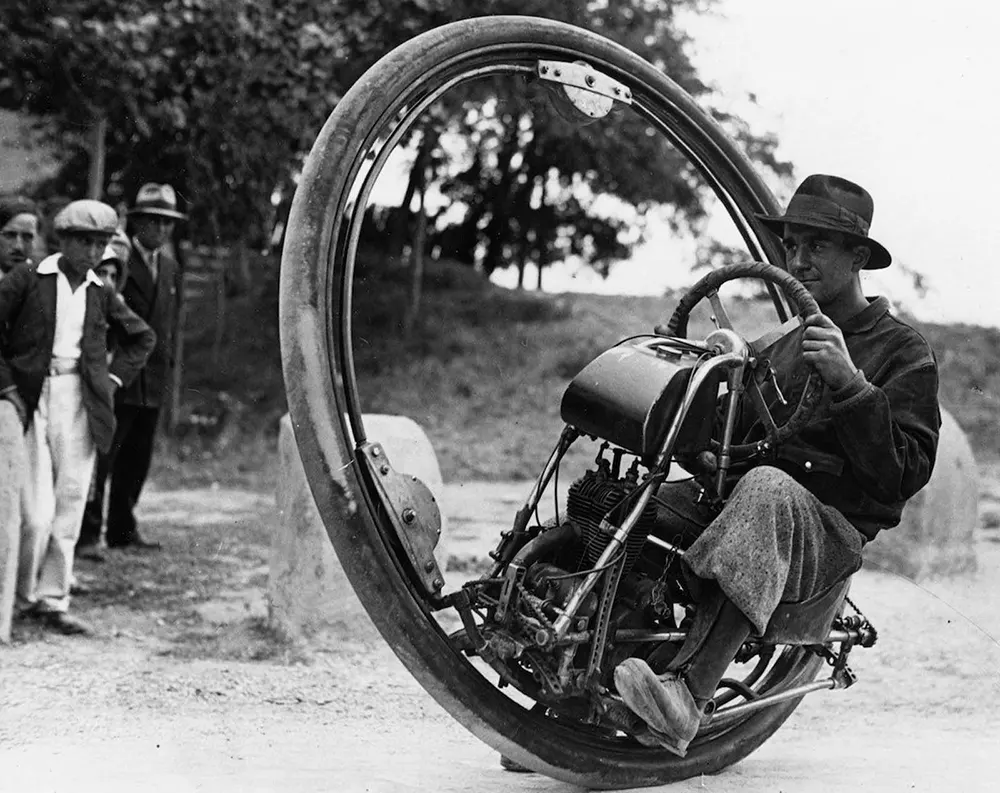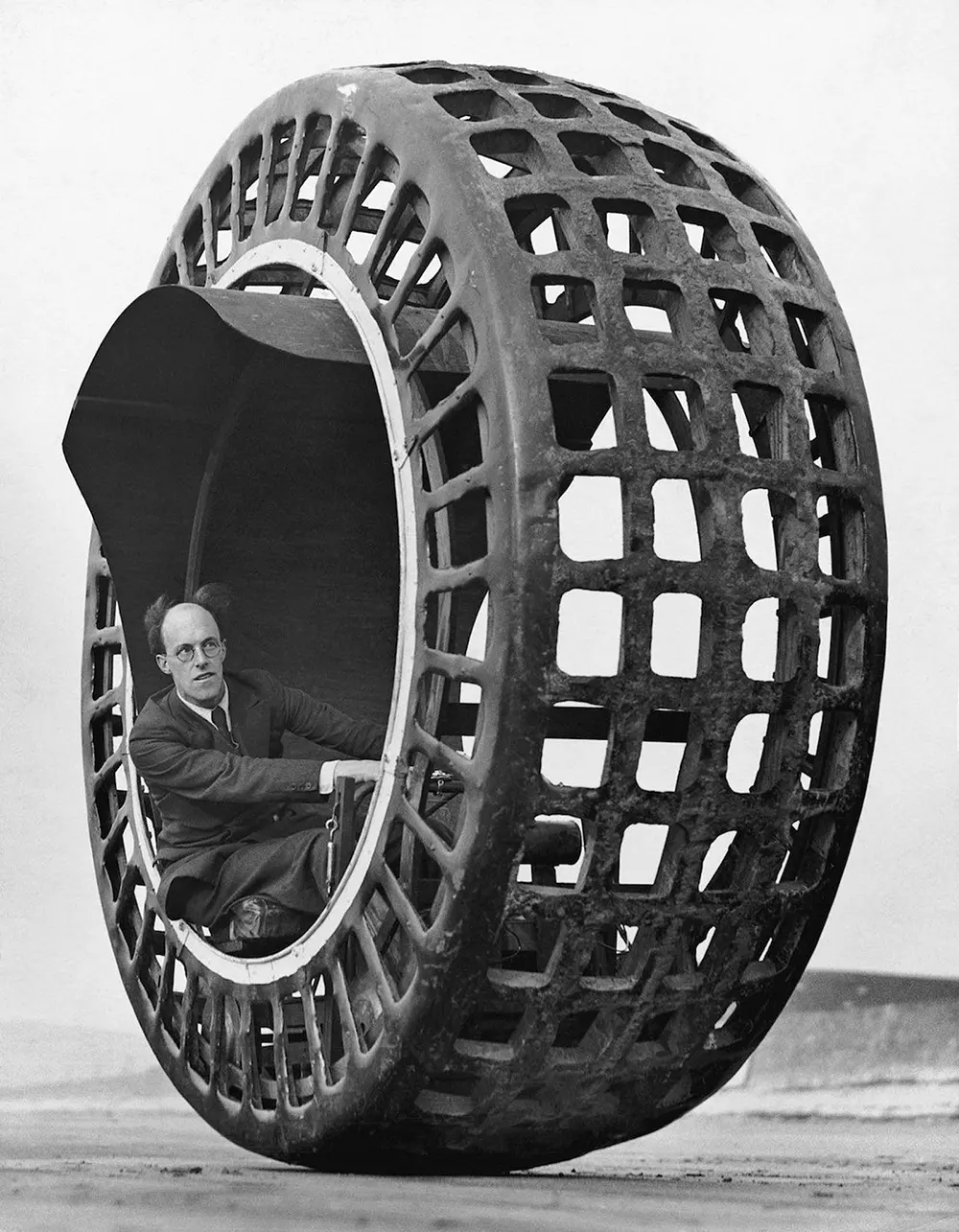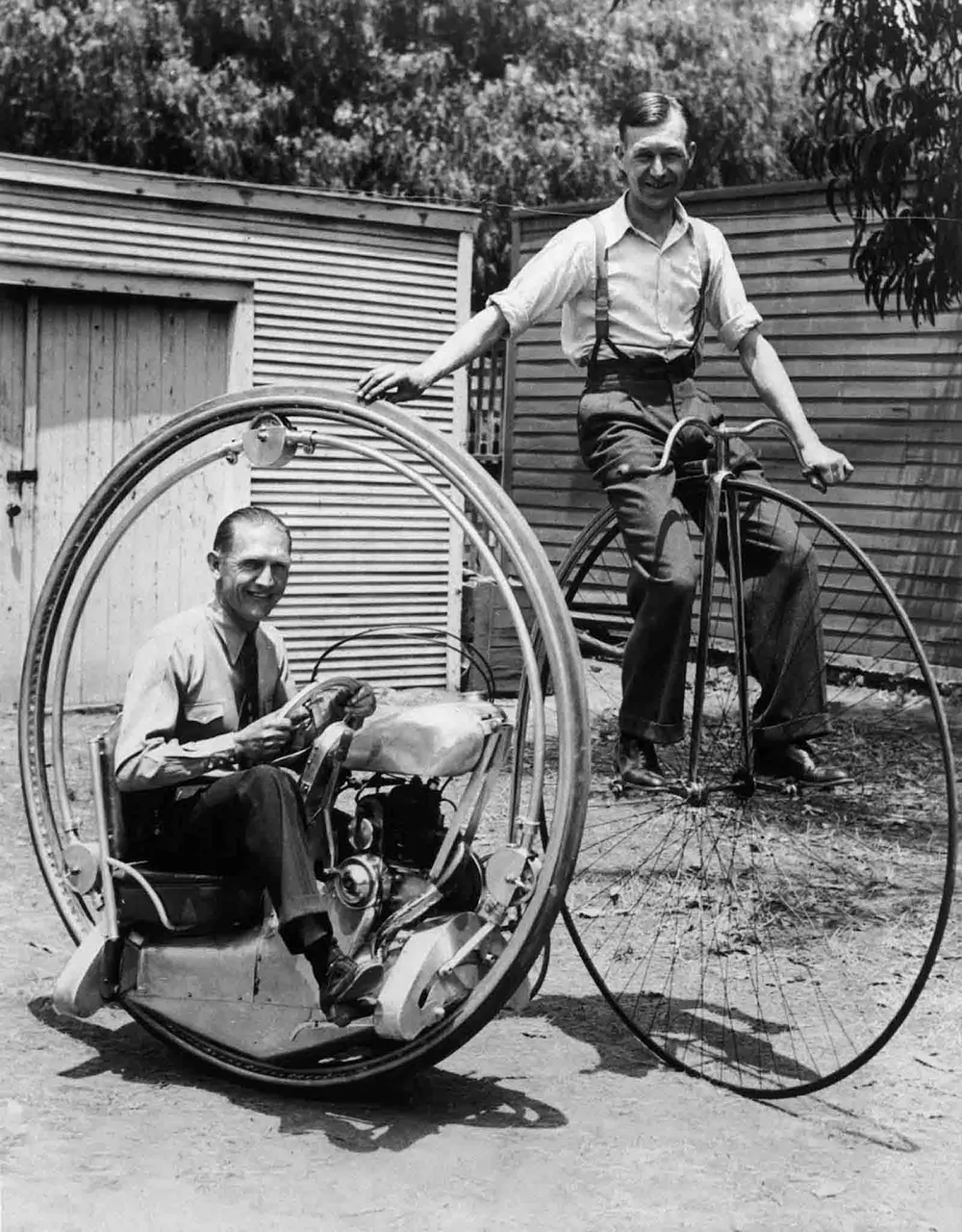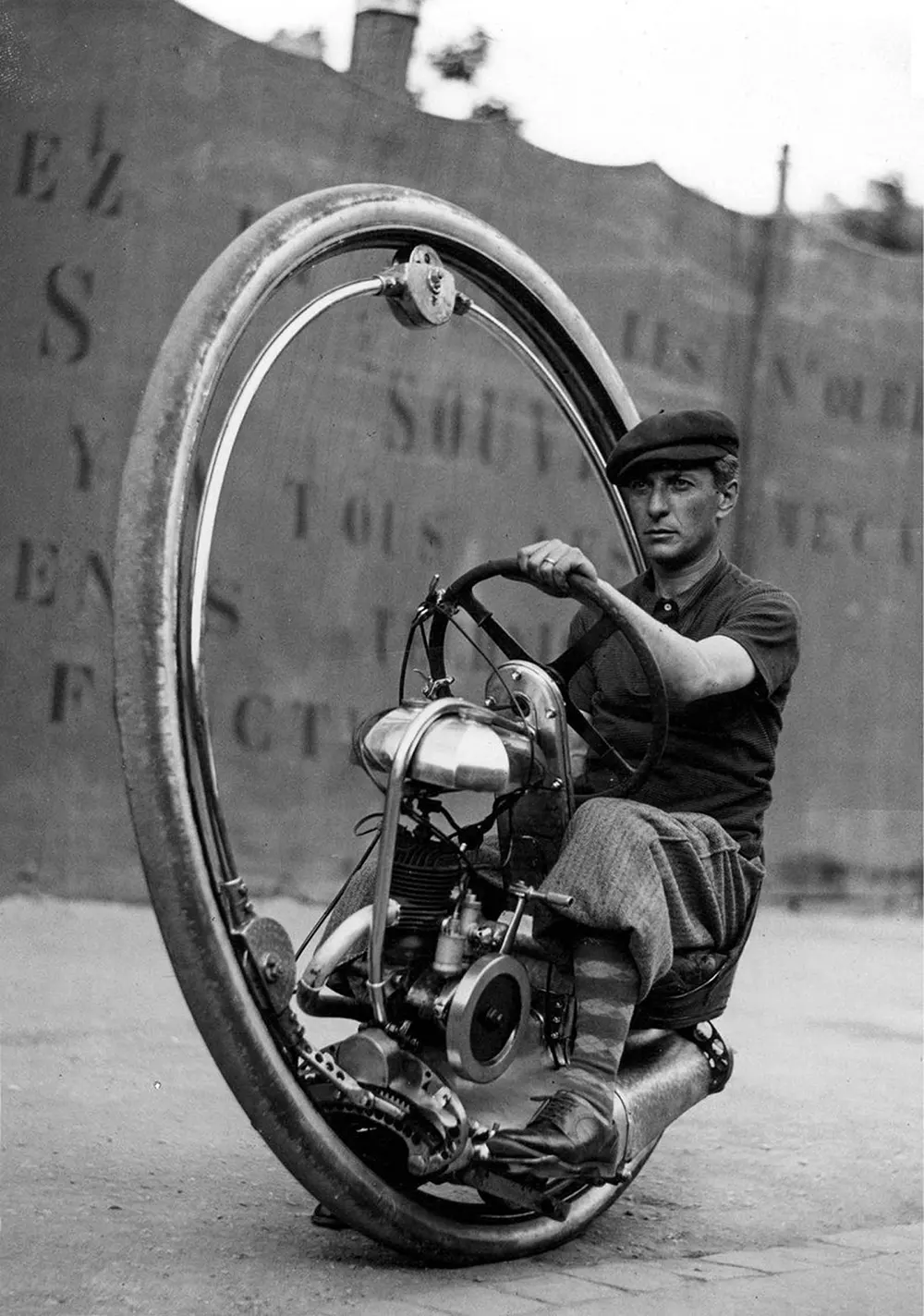
The monowheel, also known as a monocycle, was regularly proposed as a means of new transportation. They were not automatic and pedal-powered. The attained speed record for a motorized monowheel is 61.18 Mph.
Countless investors came up with versions of the monowheel; some were human-powered, some electrical, and others gas. All, however, were carrying out the same motive with the driver sitting in a small inner ring which leans against the main outer wheel, giving space for the vehicle to roll forward while the driver remains balanced.

The first monowheel was invented in 1869 by a French inventor. The monowheel was, however, accepted as a complex means of transportation and often described as ‘impracticable for ordinary mortals.’
During the 20th century, inventors began experimenting with monowheels run by actual engines, while others built monowheels with aeroplane propellers to help steering and balance. However, none of these designs was ever produced in surplus units. In the 1930s, various science magazines began displaying designs for car-like monowheels that would be encircled by metal and glass and could also seat several people.
In 1932, the most efficient known repetition of the strange car was created by Dr J.H. Purves. It was named the Dyna sphere, and it’s believed to have reached a speed of about 25 or 30 Mph.

Dr Purves strongly believed the monowheel was the more straightforward form of motorized transportation possible; sadly for him, his creation was never as successful as he had hoped. It was not the most stable vehicle; it could not carry more than one passenger in addition to the driver. Lots of overwhelming mistakes and problems were noticed in the car.
Monowheels differ from a unicycle because in the monowheel, the rider sits inside the wheel’s circumference; on the other hand, the rider sits on top of it and works like a giant ball bearing.

